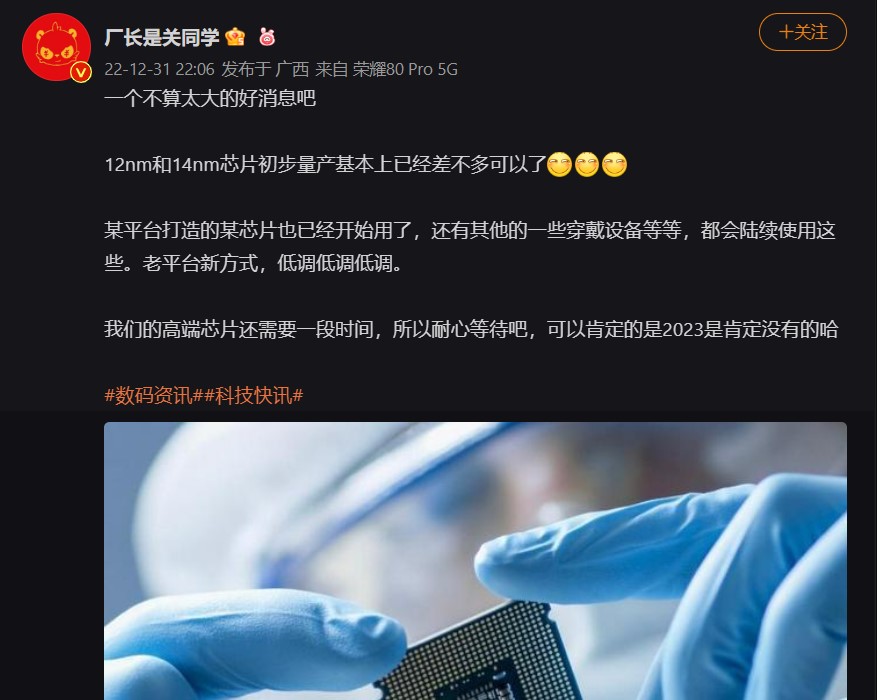The King is coming back!!!! Long live the king!!!

12nm and 14nm Huawei chipsets to launch this year
Published
16 hours ago
on
January 1, 2023
By
Over the past month, global media has been speculating new
chipset manufacturing patents and there’s a lot that may be coming this year, such as 12nm and 14nm chipsets.
According to the inputs coming from a well-known Weibo
, there are preparations going on for the first mass production of 12nm and 14nm chipsets.
Looking at the fact that the tipster (most of the time) provides inputs about Huawei, these 12 nm and 14nm chipsets may belong to no other than the Chinese tech makers.
For those who don’t know, nm stands for nanometer, a unit of measure for length. 1nm is equal to 0.000000001 meters—which is absolutely minute. In a CPU, nm is used to measure the size of the transistors that make up a processor.
Also, Huawei has the most advanced chipset designing technologies, thanks to its years of research via the HiSilicon subsidiary.
Yes, the chipset development node is not advanced but it could be used for wearable devices. Interestingly, the tipster revealed that a certain set of these chips is already in use internally.
Why?
The key to moving with low-tech design is to be efficient and move gradually in the semiconductor industry. Although, all of the designs are mastered by
but wearables and similar platforms would be nice to start with.
Advanced chip:
That’s not it, the work is underway on the advanced chipset and we’ll have to wait until 2024 to match the mobile application processor node.
The tipster comments that an advanced chipset won’t appear this year for sure, which makes sense.
ADVERTISEMENT
Exciting news:
This is a piece of exciting news and whether it’s for Huawei or for the Chinese industry, Huawei will get benefit from the outcome.
Because Huawei has one of the biggest smart wearable portfolios and there are a lot of devices that could utilize this type of semiconductor.
Kirin:
ADVERTISEMENT
For now, Huawei’s
chip inventory is exhausted and the company is solely relying on
for a new chip for smartphones.
This situation originated after the U.S. ban and since then, Huawei can’t print new chip via TSMC or similar chip production companies.
But Huawei is reshaping its supply chain and trying to bring new partners together to resolve the current in-home chip issues.



